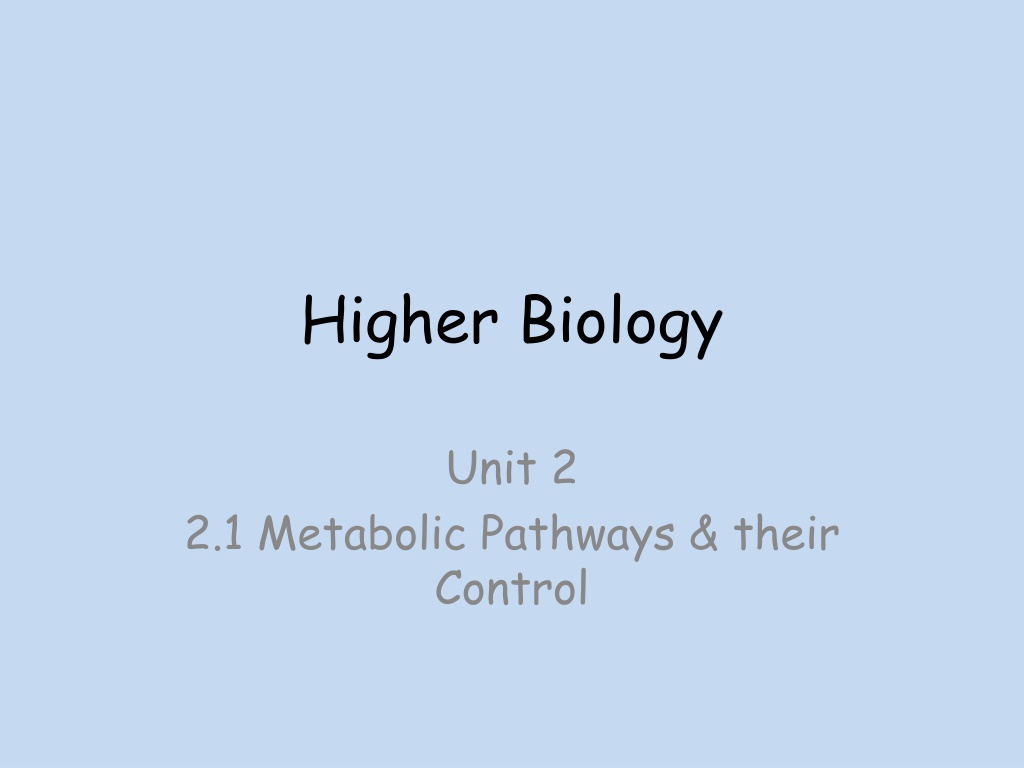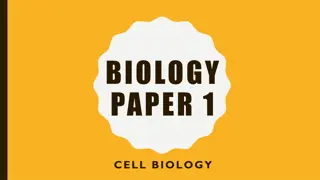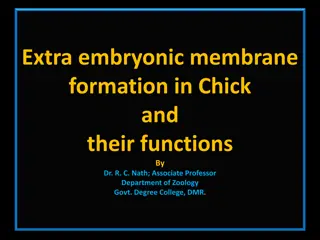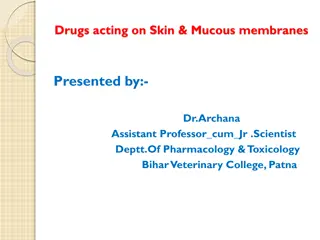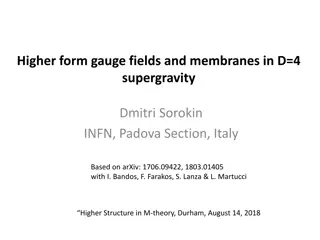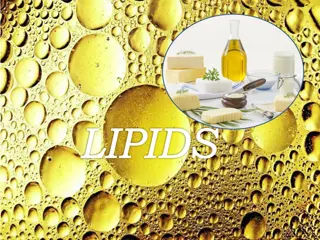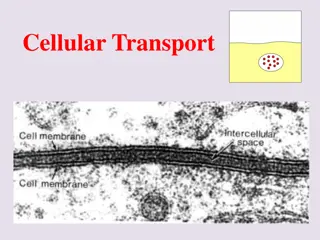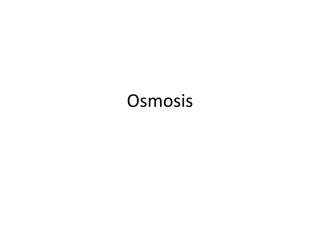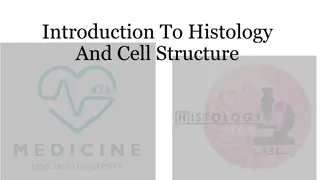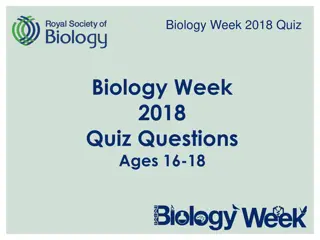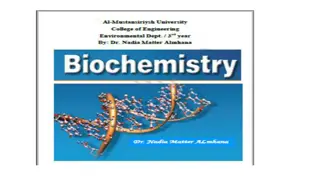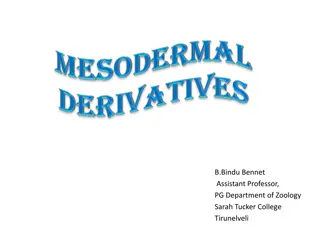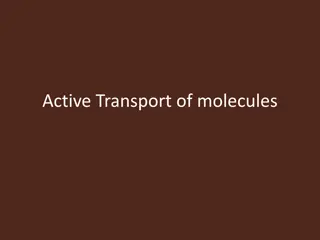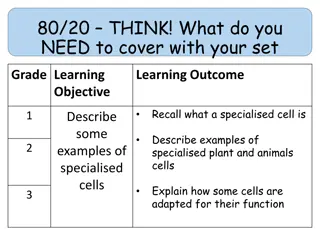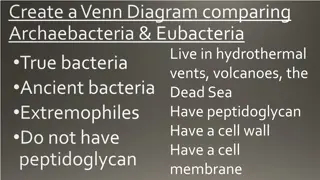Understanding the Structure and Function of Cell Membranes in Biology
Explore the intricate details of cell membranes, focusing on the phospholipid bilayer structure, protein interactions, selective permeability, and various transport mechanisms. Discover how membranes regulate the entry and exit of substances, aid in metabolism, and compartmentalize organelles for efficient cellular functions.
Download Presentation

Please find below an Image/Link to download the presentation.
The content on the website is provided AS IS for your information and personal use only. It may not be sold, licensed, or shared on other websites without obtaining consent from the author. Download presentation by click this link. If you encounter any issues during the download, it is possible that the publisher has removed the file from their server.
E N D
Presentation Transcript
Higher Biology Unit 2 2.1 Metabolic Pathways & their Control
National 5 Revision Think! With your group, write down everything you remember on the structure and function of the cell (plasma) membrane. Now carousel . Try to find additional information from the other groups to take back to your group.
National 5 Revision Now watch a short video clip on cell membranes. How much did you remember?
National 5 Revision The cell membrane controls the entry and exit of substances into and out of the cell. It is composed of a double layer of phospholipids, with proteins embedded within it or attached to it. Phospholipid bilayer Protein
National 5 Revision The phospholipid bi-layer keeps the membrane fluid and flexible. The cell membrane is selectively permeable. This means that small molecules such as glucose can pass through the membrane freely whilst large, insoluble molecules e.g. starch cannot. Proteins in the membrane are involved in transport.
National 5 Revision The three methods of transporting molecules through the membrane are; Diffusion molecules move down a concentration gradient (from high to low concentration). No energy required. Osmosis diffusion of water molecules. Active transport - molecules move up a concentration gradient (from low to high concentration).
Membranes The cell membrane forms a boundary between the cell and its external environment. It has the function of transporting materials into and out of the cell. Membranes help to regulate metabolism in a cell.
Membranes Organelles within the cell are bound by membranes This keeps metabolites; close together for reactions separated (digestive enzymes would damage the cell)
Membranes Some organelles have folds in their inner membranes. These provide a large surface area for reactions. They also form small compartments that localise metabolic pathways.
Membranes & Reaction Rates These small compartments create a high surface area : volume. This allows high concentrations of enzymes and substrates to be kept close together, resulting in faster reaction rates.
Membrane Proteins Different proteins in the membrane have different functions. For metabolism, there are proteins for; Pores Enzymes Pumps
Pores Protein pores allow ions and molecules to move passively across the membrane. These channel-forming proteins allow the transport of specific substances, making the membrane selectively permeable.
Enzymes Some membrane proteins act as enzymes to catalyse reactions. An example of this is the enzyme ATP synthase, which is used to produce ATP.
Pumps Protein pumps in the membrane are involved in active transport. This is the movement of molecules and ions against a concentration gradient. Protein pumps require energy from ATP for this. This means factors that affect the rate of respiration will also affect the rate of active transport.
Pumps Limiting factors of respiration include; temperature concentration of oxygen concentration of glucose What do you mean, I need ATP? I thought you said a tepee.
Sodium-potassium Pump An example of a protein involved in active transport is the sodium- potassium pump. Sodium ions are actively pumped out of the cell. Potassium ions are actively pumped in. Potassium Sodium
Key Points Membranes form compartments to localise metabolism. Compartments allow high concentrations of metabolites and high reaction rates. Proteins embedded in phospholipid bilayers have functions such as pores, pumps and enzymes.
Questions 1. Give two examples of organelles bounded by membranes. 2. Explain the advantage of membrane- bound compartments in cells. 3. Give two roles of proteins embedded in phospholipid membranes.
4. Describe how temperature & oxygen concentration affect the rate of sodium ion transport across the membrane. 5. Explain why transport of sodium ions is associated with a decrease in glucose concentration.
Extended Answer Question Write notes on each of the following; a) metabolic pathways b) the functions of membranes 4 marks 5 marks
